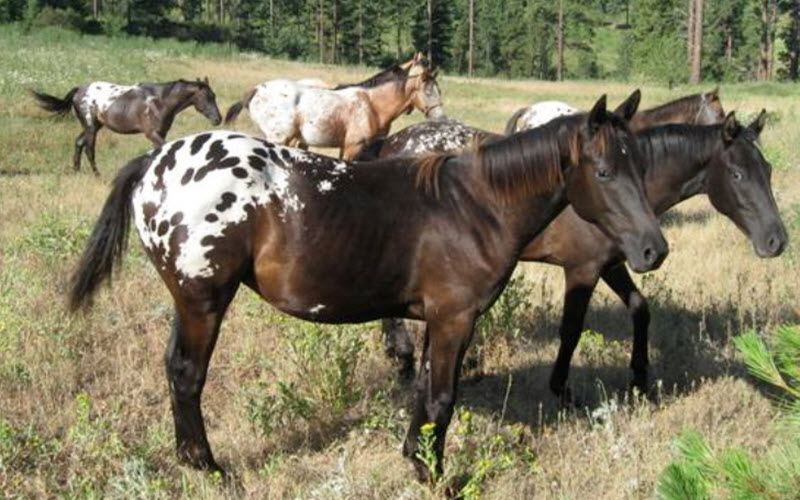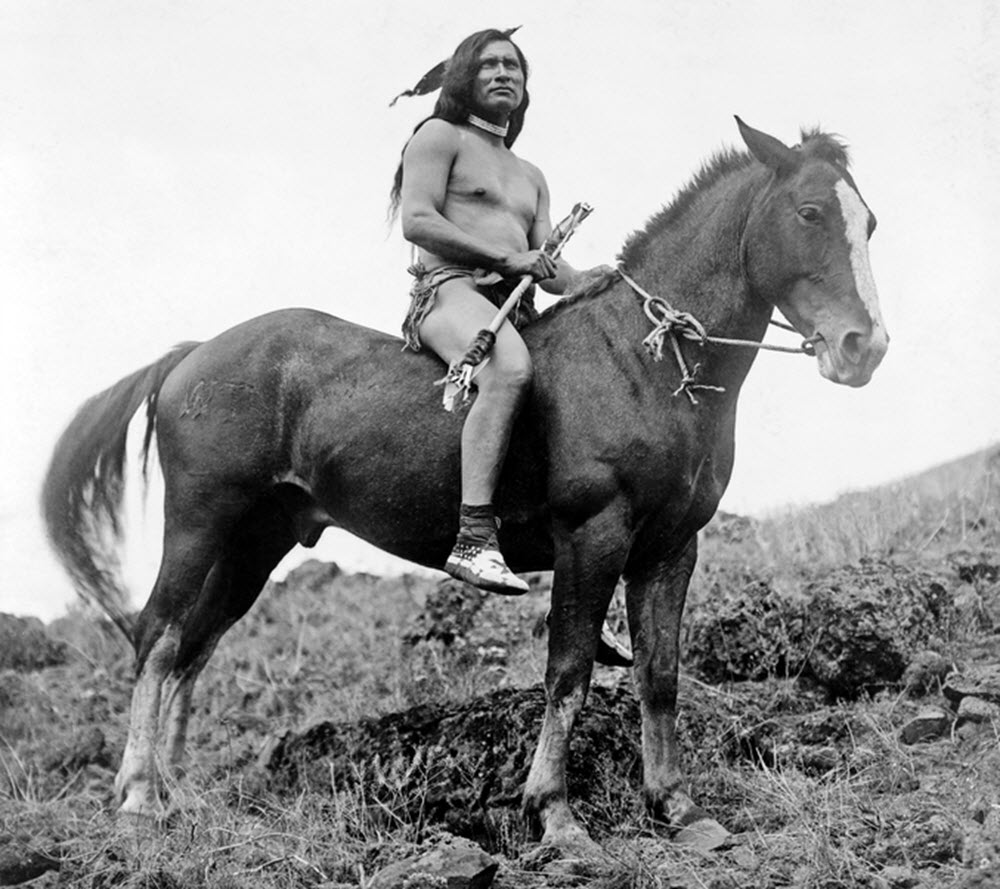On this page:
The Nez Perce horse is the result of a breeding program started by the Native American Nez Perce tribe in Idaho in 1994, with the aim of crossbreeding appaloosa horses with the old Central Asian horsebreed Akhal-Teke.

The goal was to create a horse that was similar to the horses traditionally kept by the Nez Perce in the 18th and 19th century, while simultaneously re-establish the traditional horse breeding culture of the tribe.
The breeding progra, based in Lapwai, was jointly financed by the Nez Perce tribe, the non-profit organisation The First Nations Development Institute, and the U.S. Department of Health and Human Services.
Caracteristics
The Nez Perce horse is derived from old-line Appaloosa (the Wallowa herd) and the Central Asian horse bree Akhal-Teke.
A typical Nez Perce horse is buckskin or palomino. Mottled skin, blanket and/or spotting are common features, as expected in a breed derived so heavily from appaloosas.
Modern-day appaloosas often display features from the Quarter Horses they were bred with from the 1870s and onward. Compared to a modern-day appaloosa, the Nez Perce tend to be longer and leaner, with more narrow shoulders. It gives the impression of being a “lean runner” rather than a sturdy farmhorse with Quarter Horse input.
Walk
Nez Perce horses tend to be gaited. They have a fast but smooth running walk that make them comfortable to ride.
Use
The long and lean Nez Perce horse excells at long-distance races, including difficult endurance races.
Some Nez Perce horses have performed wel in show jumping events.
Registry
The formar registry for this breed is the Nez Perce Horse Registry (NPHR).
History
The Nez Perce people, who in their own language call themselves Niimiipu, is a Native American people who in the 18th and 19th century were instrumental in developing the horse breed that we today know as the appaloosa. Originally, the breed was named after the River Palouse that ran through the lands of the Nez Perce. (A palouse horse –> Apalouse horse –> Appaloosa horse).

The Nez Perce traditionally lived in today’s Pacific North-West, and their ancestral lands includes the Columbia River Plateau which contains plenty of land highly suitable for horses. The Nez Perce aquired their first horses from the Shoshone in the 1730s and soon created a breeding program to promote the kind of horse traits they wanted. Horses deemed unsuitable for breeding were either traded away or gelded.
By the mid 18th century, the Nez Perce were already famous among both Native Americans and Europeans for their high-quality horses. Eventually, the selling of Palouse horses became an important source of income for the tribe.
After the war between parts of the Nez Perce and the U.S. Army in the 1870s, the U.S. army confiscated many of the horses from the Nez Perce and either sold them or simply shot them. Surviving members of the tribe were forced to settle in reservations and become farmers instead of breeding horses. Some of these new farmers were allowed to keep their Palouse (Appaloosa) horses, but only if they bred them with Quarter Horses to create offspring deemed more suitable for farm work and less suitable for other ventures.
This could have meant the end for the Palouse / Appaloosa breed, but a significant herd had been left behind in the Wallowa valley as the Nez Perce fled from the U.S. Army during the final stage of the war. Some of these horses were captured by European settlers who used them as ranch horses. Eventually, appaloosas also started to be kept and bred by circuses and Wild West shows.
